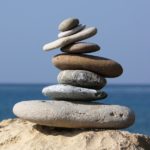Quick! Jump up and down ten times as fast as you can. Congratulations! You just used energy which was supplied from the food you ate during your last meal, or snack. Activities, like jumping, require energy and the food we eat provides that energy. In fact, all living things need energy to survive. If people and animals eat food to get energy, where do plants get their food? Hint: It does not come from a fertilizer bag. It is called photosynthesis!
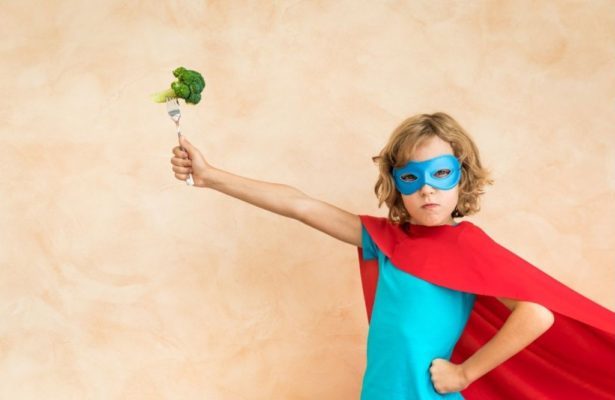
What is Photosynthesis?
Plants use energy to make their own food, and when they need energy they retrieve it from the food they made in a process called Photosynthesis. This is a Greek term which means “putting together by light“. Here is what it looks like in the Greek language: φωτοσύνθεση.
φωτοσύνθεση
If you want to impress someone, learn to write photosynthesis in Greek. It breaks down into the Greek word phōs, φωτο, which means “light” and sunthesis or σύνθεσις, means “putting together”. Personally, I think the Greek term photosunthesis makes more sense than the English version.
Photosunthesis, I mean photosynthesis, is the process of plants making sugar, or glucose. Sunlight is the key component because inside the green parts of the plant the energy of light is trapped, and the food process begins. Like many products, it all starts at the factory.
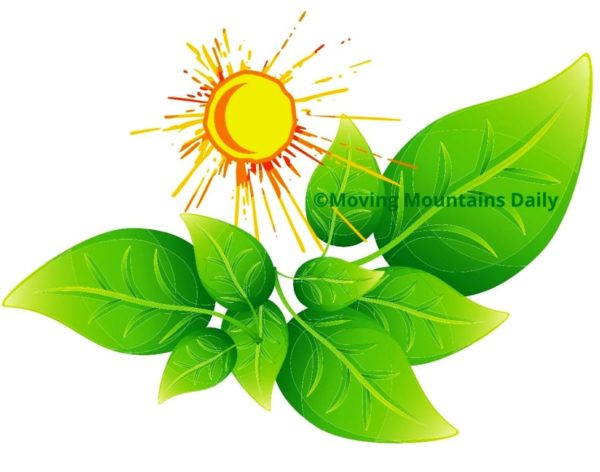
Factory Organelles named Chloroplast
Let’s consider where the products come from that we use in our daily lives. Large cities have factories that manufacture items for people to use, like automobiles, cereal, and tennis shoes just to name a few. I think we can all agree that we would never go to an automobile factory to watch a pair of tennis shoes being made, right? That is because each factory has its own specialty product.
Cells are similar.
Think of the cell like a miniature city. Inside the mini cell-city lots of work is going on, some of it in specialized factories called ‘organelles‘. In the green part of the plant cell, there is a food factory (organelle) called a chloroplast. It is opened for business as long as there is light. While there is nothing like sunlight, plants can still make food on a cloudy day.
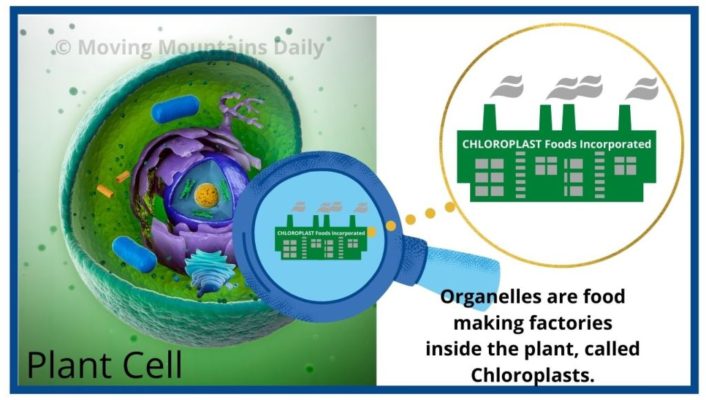
Green Collar Workers
When a product is made inside a factory there has to be workers. Take a field trip to a local factory and you will see lots of people, called “blue collar workers” who perform manual labor. It is their skill and hard work that puts a product together.
If the Chloroplast factory had doors, and if you could enter, you would see little green molecule workers madly working to capture the energy from the sun’s light. These green collar workers are made of a special pigment chemical called “Chlorophyll” which captures sunlight and gives plants their green color.
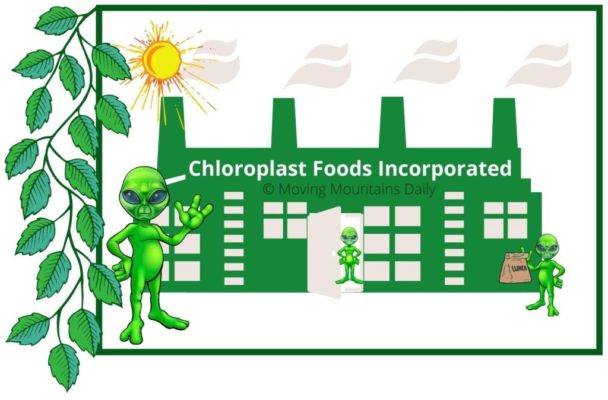
Inside the Chloroplast Factory
The chloroplast factory is a busy place. During daylight hours the sunlight creates a chemical reaction with carbon dioxide (Co2) from the air, and water (H2O) from the soil.
Water + Carbon Dioxide + Light Energy = Oxygen and Glucose (Sugar)
Glucose, or sugar, is the final product that gets transported throughout the leave’s veins and sent off to all parts of the plant. The oxygen that is produced is actually a poisonous byproduct. No self respecting plant wants poison around so oxygen gets released to the atmosphere. That is good for us because our bodies like oxygen!
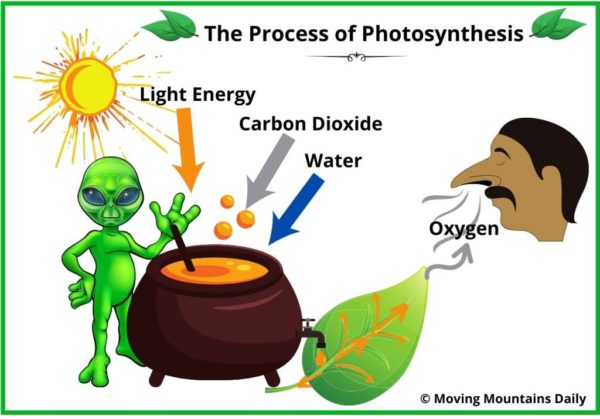
How does the leaf take in Carbon Dioxide?
Water, either from precipitation or ground water, gets absorbed through the plant’s root system and is then carried up through the plant and into the leaves. But what about carbon dioxide? Can a plant really breathe?
On the underside of the leaf there are tiny little openings, called Stomata. (Stomata is plural; stoma is singular.) The Greek word, στόμα “stoma“, means “mouth”. Want to try and write stoma in Greek?
στόμα
There are banana shaped guard cells on each side of the stomata that look like a pair of lips. When the sun rises, the guard cells swell causing the stomata to open. This allows carbon dioxide from the air to enter the leaf and oxygen to exit. When night falls, the guard cells shrink, causing the stomata to close.
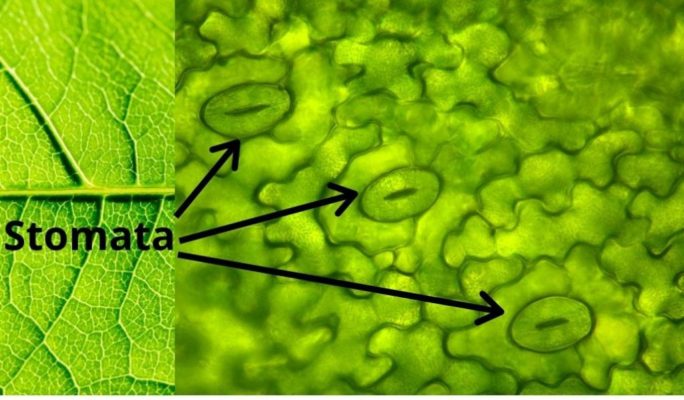
Respiration
It is easy to visualize the plant breathing through the stomata: carbon dioxide in – oxygen out, carbon dioxide in – oxygen out….. you get the picture. This exchange of carbon dioxide and oxygen is called respiration which creates a special relationship between plants and other living life.
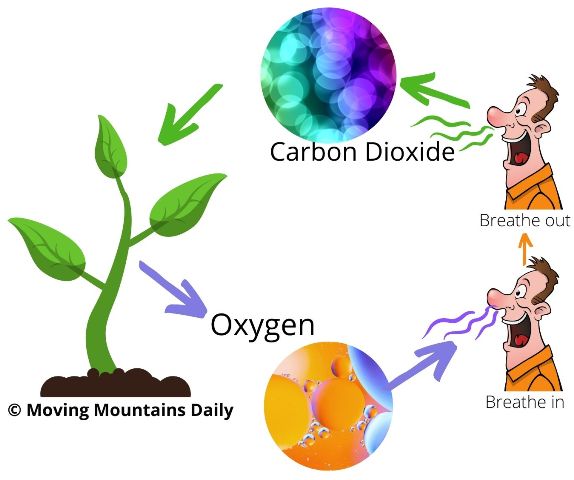
The Special Relationship between Plants and Humans
Plants breathe out oxygen. Humans (and animals) breathe in oxygen. Humans breathe out carbon dioxide and plants breathe it in. Now that is a special relationship. So the next plant you pass, tell it thank you for the supply of oxygen that is keeping you alive!
Do Plants Sleep at Night?
Photosynthesis requires light energy and the moon does not emit enough light, so food production can not occur during darkness. Respiration, however, does not stop, it continues all night long.
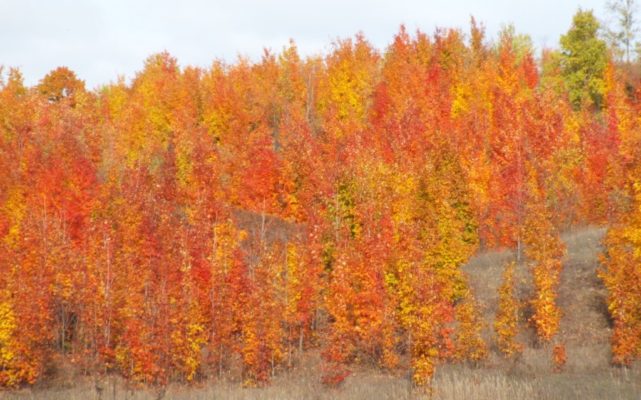
Why do leaves turn colors?
As the days shorten and become colder, there are less hours in the day to accomplish the photosynthesis process. Lack of sunlight causes the chlorophyll to stop being produced. The plants defense to survive is to shed its leaves, conserve food, and go dormant until the season changes and the daylight hours lengthen. When this happens the green chlorophyll fades and other chemicals within the leaves react to create other vibrant colors.
Maple Syrup
In the spring, when the days start to get warmer but nights are still cold the sap in the sugar maple trees begin to flow. Some people tap the syrup from maple forests, collect it in buckets, and boil it down. The boiling process thickens the thin sap to the thickness of maple syrup. Yummm! Sugar doesn’t get any better than that!
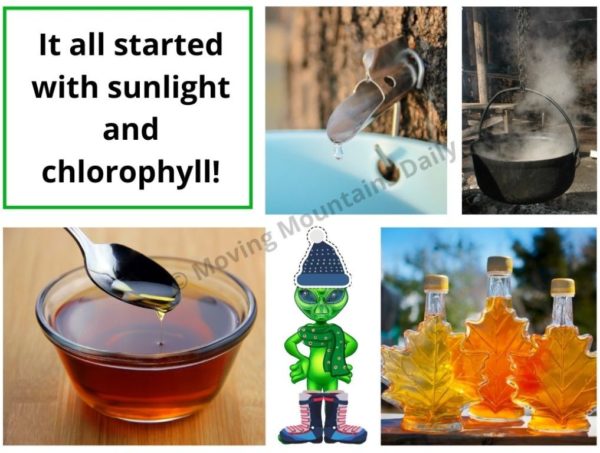
Let’s Taste Photosynthesis!
In this lab, you will have a chance to taste the sugars made by photosynthesis.
Supplies:
- A plate of pancakes or French toast
- Fork
- Plate
- Napkin
- Maple Syrup – The real deal not the fake sugar stuff.
Pour maple syrup onto your pancakes and shut your eyes, while you enjoy the sugars made by the sugar maple tree during photosynthesis! Think about the sweetness of the sun’s light and all the work that the green collar workers put into their product.
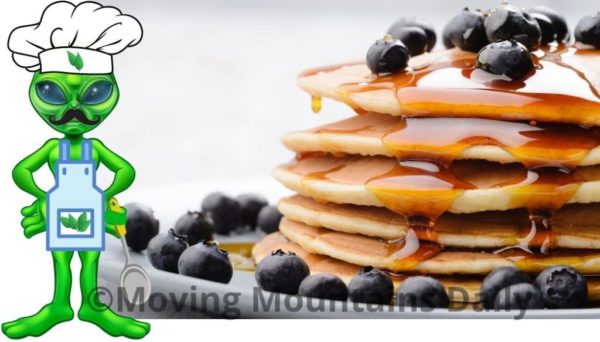
Putting it all Together
When people plant a tree or a garden, they think that by providing rich soil, water, and some fertilizer that they are feeding and nourishing their plants. However, plant food does not come from a bag.
A green plant is called an autotroph because it can use the energy from light to make its own food source by chemical reaction. This begins when the chlorophyll captures light energy. What plants really need is carbon dioxide and water in the presence of sunlight.
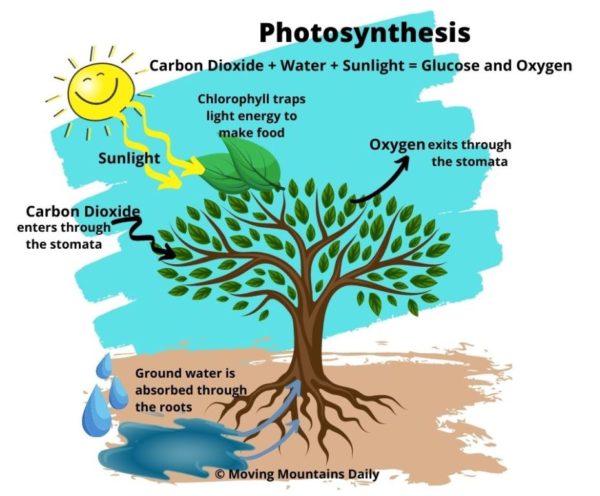
Carbon Dioxide + Water + the presence of Sunlight
= Glucose and Oxygen
The completed chemical reaction creates glucose molecules, or sugar. The plant can store glucose for later, or transport it throughout the stems and leaves. Sugar molecules are easily broken down – which is why sugar gives us instant energy and makes kids annoyingly bouncy.
Photosynthesis is the number one source of oxygen on the earth. Without it, life for plants, humans, and animals would cease to exist.
Create a Photosynthesis Poster
Follow the prompts and download the free printable pages. Then, using the information from this post, create a poster to explain the photosynthesis process. Page three is an example of what a poster could look like. Some kids need this extra visualization, however if you don’t feel you need the example, just print pages 1-2.
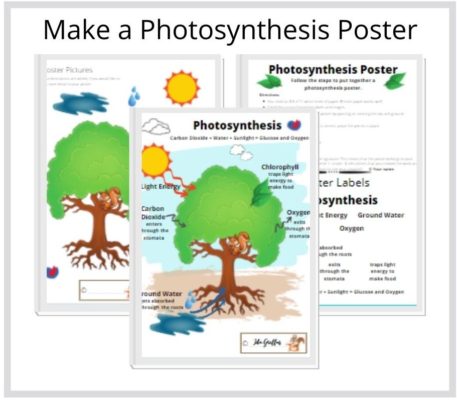
Vocabulary
Photosynthesis – The food making process by chemical reaction.
Organelle – A tiny part of the cell that has a specialty job.
Chloroplast – Food factory inside a plant
Chlorophyll – The green chlorophyll molecule catches sunlight and also makes the leaf and stems of a plant green.
Stomata/ Stoma – Tiny opening on the underside of the leaf that open or close to allow gases in or out.
Carbon dioxide – Is a molecule needed by plants to make glucose. Humans and animals breathe it out and plants breathe it in.
Oxygen -The most common gas found in air and is created and released by plants.
Respiration – The exchange of two gases: carbon dioxide and oxygen
Autotroph – Plants that can feed themselves by making their own food.
Glucose – A type of sugar created when plants use sunlight to convert oxygen and carbon dioxide.
Have you completed our Gymnosperms Science Labs? Check out:
The Fascinating World of Gymnosperms for Kids
Taking the Confusion out of Identifying Conifers for Kids

